Experience Serenity: Exploring the Scenic Trails of Anshan Qianshan
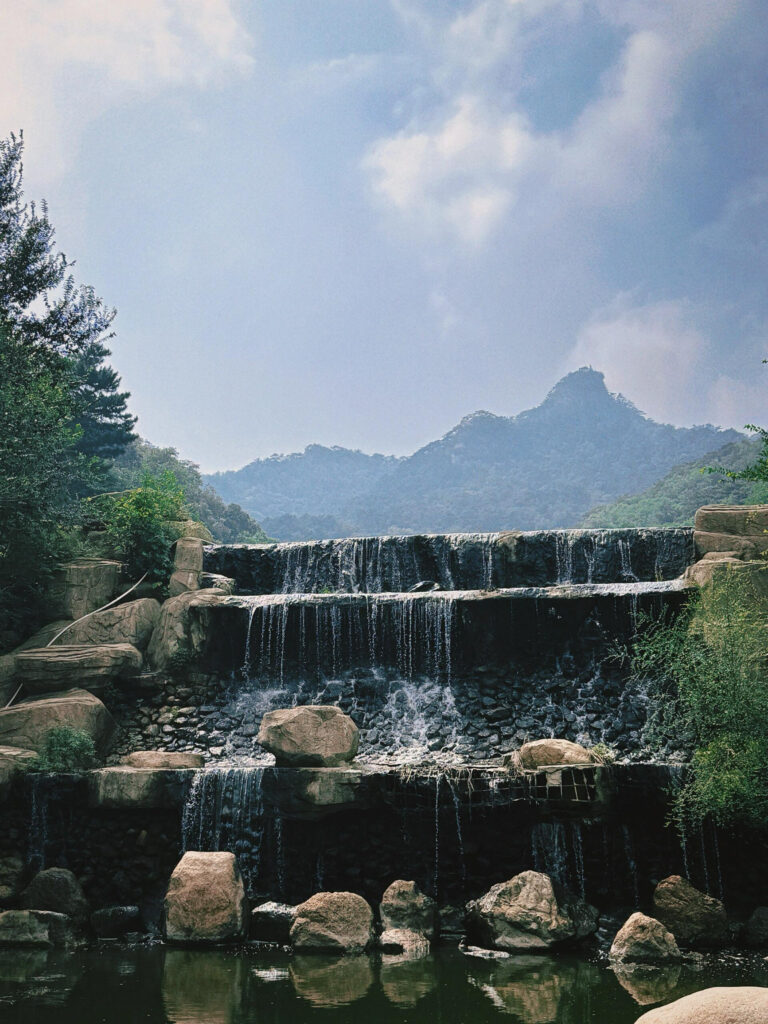
An Essential Guide to Visiting Anshan_Qianshan_Scenic_Area
Nestled in the heart of Liaoning Province, Anshan Qianshan Scenic Area is a hidden gem that captures the essence of China’s natural beauty and rich cultural heritage. Known as “the First Immortal Mountain of Northeast China,” Qianshan is a sacred site for Taoism, featuring over a thousand peaks that resemble lotus flowers, each steeped in legend and spirituality.
As you traverse its ancient trails, you’ll be treated to breathtaking views of jagged cliffs, lush forests, and serene temples, where the air is heavy with the scent of pine and the sounds of nature envelop you. The highlight of your journey will undoubtedly be the majestic Maitreya Buddha, a colossal statue carved from natural rock, standing sentinel over the landscape and inviting visitors to pause and reflect.
Whether you are seeking adventure on its hiking paths, tranquility in its monasteries, or the simple pleasure of connecting with nature, the Qianshan Scenic Area promises an unforgettable experience. With its inviting warm springs, vibrant seasonal flowers, and the whispers of history echoing through its ancient structures, this enchanting destination offers a perfect blend of relaxation and exploration that beckons to travelers from around the globe. Prepare yourself to delve into the wonders of Anshan Qianshan, where every corner holds a story and every moment is a chance to connect with the spirit of the land.
In This Guide
- An Essential Guide to Visiting Anshan_Qianshan_Scenic_Area
- The Rich History and Legends of Anshan_Qianshan_Scenic_Area
- Main Highlights: What You Absolutely Can’t Miss
- Planning Your Visit: A Practical Guide
- Tickets: Prices, Booking, and Tips
- How to Get There: A Complete Transportation Guide
- Local Cuisine and Accommodation Nearby
- Frequently Asked Questions
- Final Thoughts on Your Trip
The Rich History and Legends of Anshan_Qianshan_Scenic_Area
Nestled in the heart of Liaoning Province, the Anshan Qianshan Scenic Area, often referred to simply as Qianshan, is a treasure trove of history and legend, offering visitors a glimpse into the rich tapestry of Chinese culture intertwined with breathtaking natural beauty. This area, revered as a sacred site in Taoism, is not just a visual feast but also a spiritual haven that draws pilgrims and travelers alike.
Ancient Roots
The history of Qianshan dates back over a millennium, with its earliest mentions appearing in texts from the Tang Dynasty (618–907 AD). It has been a site of worship and reverence for centuries, embodying the spiritual aspirations of the local populace. The name “Qianshan,” which translates to “Thousand Mountains,” reflects its unique landscape, characterized by nearly a thousand peaks resembling lotus flowers. These natural formations have inspired countless tales and legends that echo through the ages.
The Legend of the Bodhisattva
One of the most beloved legends associated with Qianshan is that of the Maitreya Buddha, also known as the Future Buddha. According to local lore, it is said that the Maitreya, upon visiting the area, blessed Qianshan with his presence, leading to the emergence of the iconic 30-meter-tall Maitreya Buddha statue that stands majestically today. This statue, carved from natural rock, is a focal point for visitors, who often come to touch its foot for good luck and blessings.
A Sanctuary for Spirituality
Qianshan is dotted with ancient temples and monasteries, each bearing witness to the region’s deep-rooted spiritual practices. Among these, the Longquan Temple is a significant site, attracting those seeking tranquility and enlightenment. The temple’s serene ambiance and stunning architecture encapsulate the essence of Taoist philosophy, inviting visitors to reflect and meditate amidst nature.
Historical Significance
Beyond its spiritual importance, Qianshan has played a vital role in the historical narrative of Anshan. The region was crucial during various dynastic periods, serving as a strategic location for trade and cultural exchange. It was during the Ming (1368–1644) and Qing (1644–1912) Dynasties that Qianshan gained prominence as a cultural hub, with many scholars and poets visiting to be inspired by its scenic beauty and rich heritage.
Nature’s Masterpiece
The unique geological formations of Qianshan have also contributed to its historical narrative. The area’s intricate rock formations and lush vegetation have fostered an ecosystem that has flourished for centuries, further enriching the natural history of the region. The stunning landscapes have inspired artists and poets, who have immortalized Qianshan in their works, adding layers to its cultural significance.
Modern Recognition
Today, Qianshan is recognized as a National 5A Tourist Area, a designation that highlights its importance in China’s tourism landscape. The scenic area’s combination of natural beauty, spiritual significance, and rich history draws thousands of visitors each year. Hiking trails, scenic viewpoints, and cultural festivals celebrate both the legends of old and the vibrant life of the present, allowing visitors to experience the enduring spirit of this remarkable destination.
As you explore the Anshan Qianshan Scenic Area, you’ll discover that it is more than just a place of stunning views; it is a living tapestry of history and legend, where every peak and temple whispers stories of the past, inviting you to partake in its rich legacy. Whether you come to hike, to pray, or simply to absorb the beauty of this sacred land, Qianshan promises an experience that resonates deep within your spirit.
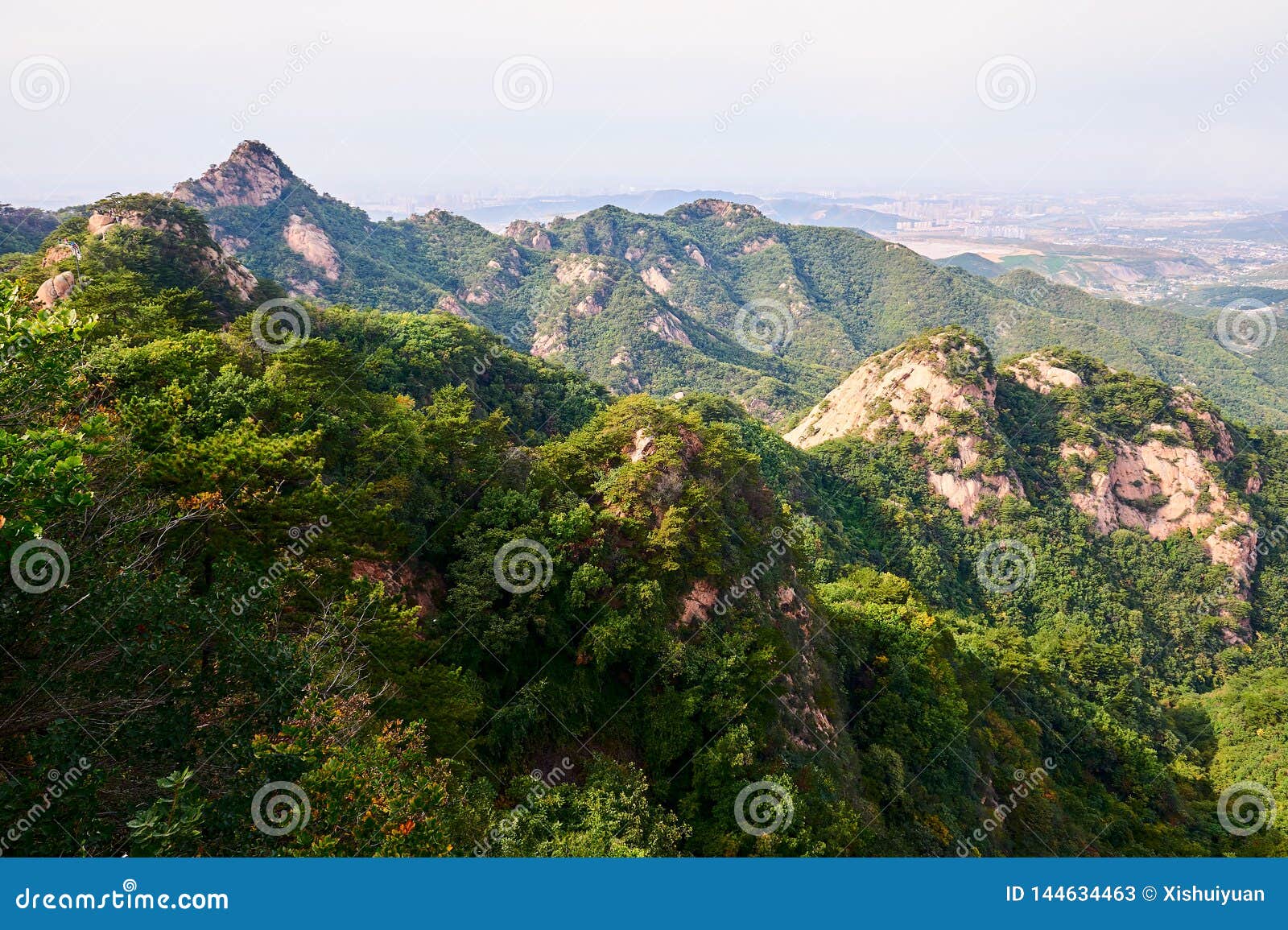
Anshan_Qianshan_Scenic_Area.
Main Highlights: What You Absolutely Can’t Miss
When visiting the Anshan Qianshan Scenic Area, prepare to be captivated by a harmonious blend of nature, spirituality, and culture. Here’s a curated list of the must-see highlights that will enrich your journey through this enchanting destination.
1. Qianshan Mountain (千山)
Known as the “First Immortal Mountain of Northeast China,” Qianshan Mountain is a breathtaking natural wonder characterized by its unique rock formations and lush greenery. The park is home to over 999 peaks, each resembling a blooming lotus flower. The best way to experience Qianshan is by hiking up to Wufoding (五佛顶), the highest peak, where you can gaze into a sea of clouds and enjoy panoramic views of the surrounding landscape. For those looking for a less strenuous option, a cable car ride can whisk you halfway up the mountain, making it accessible for all ages.
2. The Maitreya Buddha (千年彌勒大佛)
At the heart of Qianshan lies the impressive Maitreya Buddha, a colossal statue carved from natural granite. Standing at 30 meters tall, it is one of the largest sitting Buddhas in Asia. Visitors are often drawn to the stunningly detailed features and the massive prayer beads that adorn the statue. A visit here is not only a visual feast but also an opportunity for spiritual reflection—many travelers find it a serene spot to pray or meditate.
3. Longquan Temple (龙泉寺)
Nestled within the scenic area, Longquan Temple is a tranquil Buddhist site that complements the natural beauty surrounding it. The temple features ancient architecture and is surrounded by towering ancient pines. Here, you can participate in traditional ceremonies or simply enjoy the peaceful ambiance. The temple’s history and spiritual significance add depth to your exploration of the Qianshan area.
4. Natural Oxygen Bar Trail (天然氧吧步道)
For nature lovers, the Natural Oxygen Bar Trail offers a refreshing hiking experience. This lush path is lined with vibrant flora and provides a perfect setting for leisurely walks. The high concentration of negative ions in the air makes it an excellent spot for rejuvenation. Don’t forget your camera, as the trail boasts stunning views and picturesque picnic spots.
5. Tanggangzi Hot Springs (汤岗子温泉)
After a day of hiking, unwind at the Tanggangzi Hot Springs, renowned for its therapeutic mineral waters. Here, you can soak in various pools surrounded by beautiful landscapes, perfect for relaxation and rejuvenation. The hot springs are especially appealing after a long day of exploration, offering a unique opportunity to experience the healing powers of nature.
6. The Scenic Surroundings
The Qianshan area is also home to numerous other attractions worth exploring:
– Yufosi (玉佛寺), which houses the world’s largest jade Buddha, is a sight not to be missed.
– Er219 Park (二一九公园), a perfect spot for leisurely strolls amidst blooming flowers and scenic lakes, especially in spring when cherry blossoms and peonies are in full bloom.
7. Local Cuisine
Finally, no trip to Anshan would be complete without indulging in the local flavors. Try the Anshan Beef Pie (鞍山牛庄饺子), known for its thin, crispy crust and juicy filling, or savor the Iron Pot Stew (铁锅炖), a hearty dish perfect for sharing after a day of adventure.
In Conclusion
The Anshan Qianshan Scenic Area is a treasure trove of natural beauty and cultural significance. Each highlight offers a unique glimpse into the region’s rich history and breathtaking landscapes. Whether you’re hiking up the mountains, soaking in hot springs, or enjoying local delicacies, this destination promises an unforgettable experience that captures the essence of Northeast China.
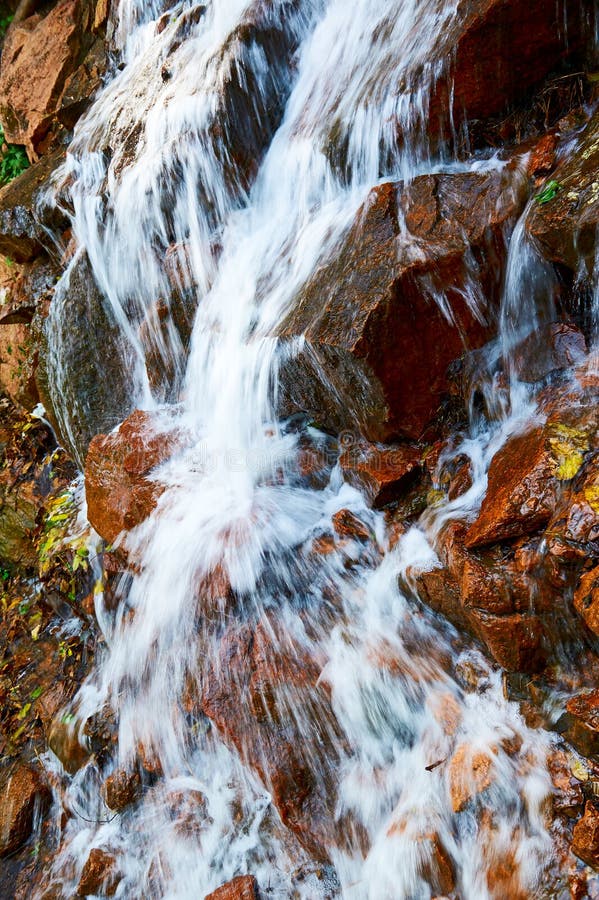
Anshan_Qianshan_Scenic_Area.
Planning Your Visit: A Practical Guide
Planning your visit to the Anshan Qianshan Scenic Area (鞍山市千山景区) promises an exciting adventure filled with breathtaking landscapes, rich cultural heritage, and a variety of activities for travelers of all types. Here’s everything you need to know to make the most of your trip.
Getting There
By Air: The nearest major airports are Shenyang Taoxian International Airport and Dalian Zhoushuizi International Airport. From either airport, you can take a bus or train to Anshan, which is around 30-90 minutes away from the scenic area.
By Train: Anshan has excellent train connections, with high-speed trains frequently running from major cities like Shenyang and Dalian. The journey from Shenyang takes about 50 minutes.
By Bus: Local buses connect various parts of Anshan to the Qianshan Scenic Area. Buses depart regularly from the city center and major transportation hubs.
Self-Driving: If you prefer flexibility, consider renting a car. Follow GPS directions to Qianshan Scenic Area North Gate; parking is available near the entrance for a small fee.
Best Time to Visit
The ideal time to explore Qianshan is from April to October, when you can witness the stunning seasonal changes. Spring brings beautiful blossoms like pear and cherry flowers, while autumn showcases vibrant foliage. Summer offers refreshing hikes, and winter presents a serene snowy landscape.
Ticket Information
- Admission Fee: Approximately ¥80 (around $12) for general access to the scenic area, which includes the famous Qianshan Buddha.
- Discounts: Reduced rates are available for students, seniors, and military personnel. Bring valid identification for potential discounts.
- Purchase: Tickets can be purchased on-site or through local travel apps for convenience and possibly discounts.
Exploring Qianshan
Must-See Attractions:
-
Qianshan Buddha: The largest natural granite sitting Buddha in Asia. It’s a spiritual highlight and a fantastic photo opportunity.
-
Trail Options:
- Easy Route: For families or those looking for a leisurely walk, start from Wuliangguan and take the cable car to Wufoding, returning via the scenic path (3-4 hours).
-
Challenging Route: For the adventurous, hike from Jicui Gate to the highest peak, Xianrendai, which takes about 6-8 hours round trip.
-
Cultural Sites: Don’t miss the ancient temples scattered throughout the area, such as Longquan Temple and Guanyin Temple, which provide insight into the region’s spiritual heritage.
Dining Options
- On-Site Dining: Qianshan features several restaurants offering local cuisine. Try the vegetarian dishes at the temple restaurants or some light snacks like grilled corn and local dumplings.
- Local Delights: After your hike, consider heading to nearby restaurants in Anshan for traditional dishes like Aanshan Xiaomai (soup dumplings) or Tiegou Stew, a hearty local specialty.
Where to Stay
- Near the Scenic Area:
- Qianshan Hot Spring Hotel: A one-stop option for those looking to relax in hot springs after a day of hiking.
-
Local Guesthouses: Available at reasonable prices, offering a cozy atmosphere and a taste of local hospitality.
-
In Anshan City:
- Wanfeng Hotel: A budget-friendly option close to the train station with easy access to local attractions.
Tips for a Smooth Visit
- Dress Appropriately: Wear comfortable hiking shoes and dress in layers; temperatures can vary significantly.
- Stay Hydrated: Bring plenty of water and snacks, especially if you plan on hiking the more challenging trails.
- Respect Nature: Follow local guidelines to protect the environment—do not pick plants or disturb wildlife.
- Safety First: Be cautious on trails, especially in wet conditions, as some paths may be slippery.
Conclusion
With its stunning landscapes, rich cultural history, and the tranquil beauty of nature, Qianshan Scenic Area offers an unforgettable experience in Anshan. Prepare well, respect the local environment, and immerse yourself in the beauty of this hidden gem in Northeast China. Whether you’re seeking adventure, relaxation, or spiritual enrichment, Qianshan has something for everyone. Enjoy your journey!
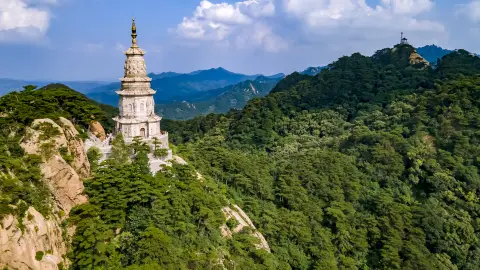
Anshan_Qianshan_Scenic_Area.
Tickets: Prices, Booking, and Tips
When planning your visit to the Anshan Qianshan Scenic Area (鞍山市千山景区), understanding ticket prices, booking options, and practical tips can significantly enhance your experience. Here’s what you need to know:
Ticket Prices
- General Admission: The ticket price for the scenic area is approximately 80 CNY (around 12 USD). This includes access to key attractions, including the impressive Maitreya Buddha statue.
- Discounted Rates: Special rates are available for students, seniors, and military personnel, often reducing the price by half, so be sure to bring appropriate identification if you qualify for discounts.
- Free Admission Days: Keep an eye out for designated free admission days or promotions, particularly during off-peak seasons.
Booking Tickets
- Online Booking: For convenience, tickets can be booked online through platforms like WeChat or Trip.com. This not only guarantees your entry but may also offer savings of about 10 CNY if purchased in advance.
- On-Site Purchase: If you prefer spontaneity, tickets can be purchased at the entrance. However, be prepared for potential long lines, especially during weekends and holidays.
Opening Hours
- Daily Access: The scenic area is open from 6:00 AM to 6:00 PM. Arriving early can help you avoid crowds and enjoy the serene morning scenery.
Tips for an Enjoyable Visit
-
Plan Your Route: Qianshan offers various hiking trails catering to different fitness levels. Consider starting at the North Gate, taking the cable car to the Five Buddha Peak, and then descending through scenic spots like Longquan Temple and Wuliang Temple. This can take around 3-6 hours depending on your pace and chosen paths.
-
Be Weather-Wise: The weather can be unpredictable, especially in spring and autumn. Dress in layers and wear comfortable, non-slip shoes suitable for hiking. Remember to bring sunscreen and a hat if you’re visiting during the warmer months.
-
Stay Hydrated and Energized: Bring plenty of water and high-energy snacks like nuts or energy bars, as food options within the park can be limited and pricier.
-
Respect Nature: As Qianshan is a protected area, make sure to follow all guidelines regarding wildlife and plant preservation. Avoid littering and stay on marked trails.
-
Avoid Peak Times: To have a more peaceful experience, try to visit on weekdays or during off-peak seasons. Early mornings are particularly beautiful and less crowded.
With these insights, you are all set for a memorable adventure at the Anshan Qianshan Scenic Area. Embrace the natural beauty, rich culture, and spiritual serenity that this stunning locale has to offer!
How to Get There: A Complete Transportation Guide
To reach the enchanting Anshan Qianshan Scenic Area, a tapestry of natural beauty and cultural significance, you have several transportation options to choose from, whether you’re arriving from nearby cities or flying in from afar. Here’s your comprehensive guide to getting there, ensuring a smooth journey to this breathtaking destination.
By Air
The nearest major airport is Shenyang Taoxian International Airport (SHE), located approximately 1.5 hours away from Anshan by car. From the airport, you can:
- Take an Airport Shuttle Bus: Direct buses run to Anshan, offering a convenient way to reach the city. The journey takes about 1-1.5 hours.
- Opt for a Taxi or Rideshare: Taxis are available at the airport, and a direct ride to the scenic area will take approximately 1 hour.
Alternatively, Dalian Zhoushuizi International Airport (DLC) is another option, with high-speed train connections to Anshan.
By Train
Anshan is well-connected by rail, making it easy to access from several major cities:
- High-Speed Train:
- From Shenyang, it takes about 50 minutes to reach Anshan West Station.
- From Dalian, the journey is around 1.5 hours.
- From Beijing, expect a travel time of about 4 hours.
Upon arrival at either Anshan Station or Anshan West Station, you can catch a local bus or taxi to the Qianshan Scenic Area.
By Bus
If you prefer traveling by bus, Anshan is serviced by several long-distance bus routes from nearby cities:
- From Shenyang, multiple buses run daily to Anshan’s main bus station, taking about 1.5 hours.
- Dalian also has regular buses to Anshan, with a similar travel time.
Once in Anshan, local buses (like bus number 88) frequently head towards the Qianshan Scenic Area, or you can opt for a taxi for convenience.
By Car
For those wanting flexibility and the thrill of the open road, driving to Anshan is a fantastic option:
- From Shenyang: Take the G1 Expressway south to Anshan, with a travel time of about 1.5 hours.
- From Dalian: Head northwest via the G15 Expressway; it takes roughly 2 hours.
- Parking: Qianshan Scenic Area has designated parking areas, and parking fees are typically around ¥5-10 per hour.
Local Transportation
Once you arrive at Qianshan, navigating the area can be done via several means:
- Walking: The scenic area is designed for exploration on foot, with beautiful trails and paths leading to various attractions.
- Cable Cars: For a more leisurely ascent, consider taking the cable car to the Five Buddha Peak, offering stunning views along the way.
- Bicycles and Electric Carts: Rentals may be available in the vicinity, allowing you to explore at your own pace.
Final Tips
- Plan Ahead: Check train and bus schedules in advance, especially during peak tourist seasons.
- Weather Considerations: Dress appropriately for the weather, as conditions in the mountains can change rapidly.
- Tickets: Consider purchasing tickets online ahead of time, especially during holidays, to avoid long lines.
With these transportation options and tips, your journey to Anshan Qianshan Scenic Area will be as delightful as the destination itself. Enjoy your adventure in this natural wonderland!
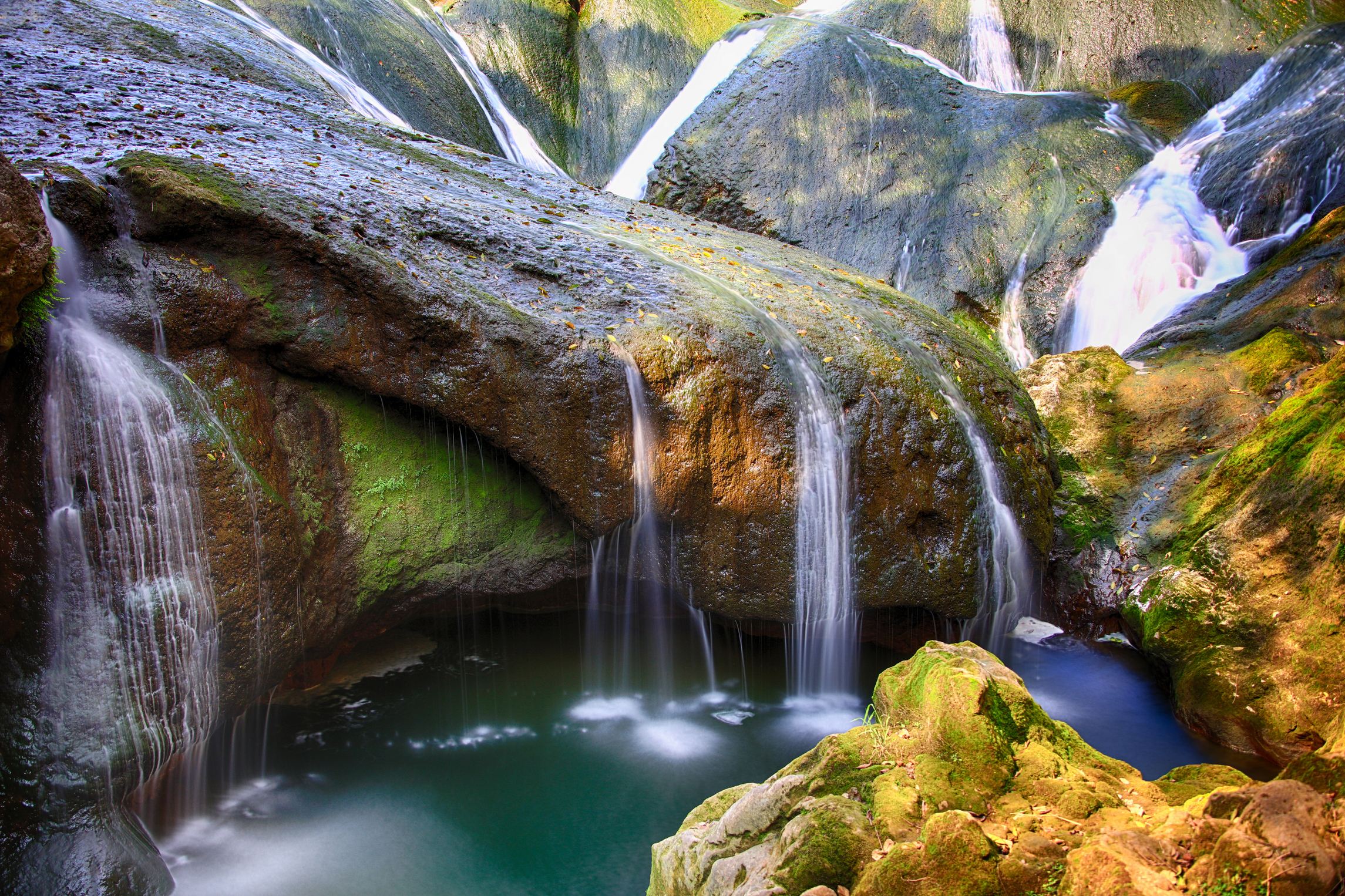
Anshan_Qianshan_Scenic_Area.
Local Cuisine and Accommodation Nearby
When visiting the Anshan Qianshan Scenic Area, your experience can be enhanced by indulging in the local cuisine and choosing the right accommodation nearby. This region is not only known for its breathtaking landscapes but also for its delectable food options and comfortable stays.
Culinary Delights
- Local Specialties:
- Anshan Beef Pies (牛莊餡餅): Renowned for their thin, crispy crusts filled with succulent beef or seasonal vegetables, these pies can be found at various eateries near the scenic area. Enjoy them with a side of spicy dipping sauce for the perfect snack after your hike.
- Iron Pot Stew (铁锅炖): A hearty dish ideal for sharing, this stew is prepared in a traditional iron pot and includes a mix of meats and vegetables. The slow-cooked flavors are a must-try after a day of exploration.
-
Sour Cabbage and Pork Hot Pot (酸菜白肉锅): This local favorite features tender pork and flavorful pickled cabbage, making it a comforting meal that warms you from the inside out.
-
Street Food:
- Grilled Skewers (烤串): Head to the local night market for a variety of grilled skewers, including lamb and vegetables, all seasoned with spices that pack a punch. They make for a delicious late-night snack.
- Nanguo Pears (南果梨): This regional fruit is not to be missed! Sweet and juicy, these pears are perfect for a refreshing snack as you wander through the area.
Accommodation Options
-
Qianshan Hot Spring Hotel (千山温泉酒店): Located conveniently at the foot of Qianshan, this hotel offers a unique combination of mountain hikes and soothing hot springs. After a day of trekking, unwind in their natural hot spring pools, which are known for their therapeutic properties.
-
Anshan Qianshan Farm Stay (鞍山千山农家院): For a more rustic experience, consider staying at a local farm stay. These accommodations often provide a cozy atmosphere with home-cooked meals featuring local ingredients, allowing you to experience authentic northeastern Chinese hospitality.
-
Business Hotel near Anshan Station (站前万熹酒店): If you prefer a more modern and urban setting, this hotel offers comfortable rooms at competitive rates, making it an ideal spot for travelers looking for convenience. It’s also a short drive from the scenic area.
Tips for Your Visit
- Plan Ahead: Reservations are recommended, especially during peak seasons. This is particularly true for popular restaurants and accommodations.
- Explore the Night Markets: After a day of sightseeing, the vibrant night markets in Anshan offer a unique culinary experience, with plenty of local delicacies to try.
- Stay Hydrated: While indulging in the local cuisine, ensure you drink plenty of water, especially if you’re hiking in the scenic area.
By immersing yourself in the local flavors and comfortable accommodations, your visit to the Anshan Qianshan Scenic Area will be both memorable and enjoyable!

Anshan_Qianshan_Scenic_Area.
Frequently Asked Questions
-
What are the opening hours of the Qianshan Scenic Area?
The Qianshan Scenic Area is open from 6:00 AM to 6:00 PM. It’s best to arrive early to enjoy the serene morning atmosphere and avoid crowds. -
How do I get to Qianshan from Anshan city?
You can reach Qianshan by taxi or local bus. Taxis are convenient and relatively inexpensive, while public transportation can be a fun way to experience local life. If you’re driving, follow the signs to the scenic area; there is ample parking available. -
What is the entrance fee for Qianshan?
The entrance fee is approximately 80 RMB. Discounts are available for students, seniors, and certain groups, so be sure to bring your ID for any applicable reductions. -
Are there any recommended hiking routes within Qianshan?
Yes! For a moderate hike, consider the route from Wuliang Temple to the top of Five Buddha Peak. This path takes about 3-4 hours and offers stunning views and interesting rock formations along the way. For a more challenging experience, the trail to Xianrendai Peak is ideal, taking around 6-8 hours. -
What should I wear during my visit to Qianshan?
Comfortable hiking shoes are essential due to the rocky terrain. Dress in layers, as temperatures can vary throughout the day, especially at higher altitudes. Don’t forget a hat, sunglasses, and sunscreen for sun protection! -
Can I find food and drinks within the scenic area?
Yes, there are several restaurants and snack stalls inside Qianshan serving local dishes. However, it’s advisable to bring some snacks and water, especially if you plan to hike extensively, as the prices can be higher inside the park. -
Is it possible to stay overnight at Qianshan?
While the Qianshan Scenic Area itself does not offer overnight accommodations, there are various hotels and guesthouses in Anshan city nearby. For a unique experience, consider staying at a local hot spring resort like Tangangzi Hot Springs, which is just a short drive away. -
What are some must-see attractions in Qianshan?
Besides the breathtaking hiking trails, don’t miss the Qianshan Giant Buddha, which is one of the largest natural stone Buddhas in Asia. The ancient temples scattered throughout the area, such as Longquan Temple and Wuliang Temple, are also worth a visit for their historical and spiritual significance.
Final Thoughts on Your Trip
As your adventure in the Anshan Qianshan Scenic Area comes to a close, take a moment to reflect on the breathtaking landscapes and rich cultural experiences that have unfolded during your journey. From the serene beauty of the ancient temples nestled among the peaks to the awe-inspiring sight of the colossal Maitreya Buddha, Qianshan offers a unique blend of nature and spirituality that resonates deeply with every visitor.
Whether you trekked to the summit of Wufoding to witness the mesmerizing sea of clouds or indulged in the rejuvenating waters of Tanggangzi Hot Springs, each moment spent here adds to the tapestry of your travel memories. The vibrant local cuisine, especially the iconic Anshan dumplings, serves as a delicious reminder of the region’s hospitality and flavor.
As you prepare to leave this hidden gem, remember that Qianshan is not just a destination; it is a sanctuary for those seeking solace, adventure, and inspiration. Carry the tranquility of the mountains and the warmth of the local culture with you, and let these experiences enrich your future travels. Until next time, may your journeys continue to be filled with discovery and wonder!